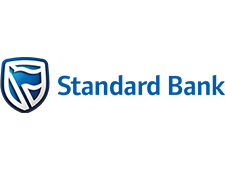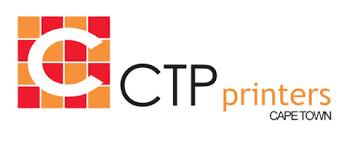PEARSON SOUTH AFRICA: Embracing the Digital Dawn
Excellence is the keyword that underpins everything at Pearson, the world's leading education company; both in the content it produces and the results of the learners who use it. Its 40,000 em-ployees are spread over 70 countries, while South Africa’s best-known and most-respected names in publishing - Longman, Heinemann and Maskew Miller - came together to form Pearson SA in 2010.
Pearson provides learning solutions to all, from early childhood learning through to professional certification, offering curriculum-based materials, e-learning content and tools as well teacher training and testing programmes to millions of people worldwide. While far from being the only learning company in the South African market, Pearson MD Ebrahim Matthews identifies a number of key areas which help to differentiate and cement its position as the number one provider and creator of innovative solutions which will improve both learner achievement and institutional effectiveness.
“On the higher education side, in our institutions the focus on digital is clearly a differentiator for us from our competitors,” he explains. “The relative size of the class – the number of students per lecturer – means that we can offer a lot more individual attention than others are able to. We also have quite a strong focus on employability, preparing a graduate for the next step, and as such we have employability centres at a number of our campuses where we guide students on how to avoid the many potential pitfalls and instead flourish in finding employment.
“In terms of the content we produce, it is largely the quality which sets it apart. We have around 45% of market share in provision of textbooks to public schools in South Africa, and are by far the biggest publisher in that space. This is down in part to legacy, having been around for quite some time and founded some highly-respected brands, but more importantly we pride ourselves on efficacy, where we measure the impact that our content has on the learner. At the nub of this we believe that our content truly makes a difference in the learning experience and subsequently enhances it.”
In 2010, Pearson South Africa was created from a group of companies comprising Maskew Miller Longman, Heinemann, Prentice-Hall, and Addison-Wesley. Together this body is placed to provide extensive local educational knowledge, and combine it with the global resources at the disposal of the world’s leading learning company. Significant investment into this new entity was made in 2012, primarily in new technologies and services, which meant that Pearson South Africa was able to gain yet more access to top-quality, global content to further its product offerings, and as such remain the world’s leading learning company today. “Our core business is, in essence, to improve the lives of our learners through education,” summates Matthews on the driving force behind Person SA.
“We have two major lines of business,” he goes on, “which are in themselves specific to South African operations; it may not tally up exactly with the way in which things are done in the rest of the world. Firstly there is obviously the production and distribution of content which enhances learning, while alongside this is the delivery of higher education in one of the 12 institutions which we own and manage across South Africa.” This last point relates to a significant portion of the company’s organic growth, which sees Pearson South Africa deliver direct education through its own independent educational institutions. These are CTI and Midrand Graduate Institute (MGI), and at present the CTI Education group has over 14,000 students spread across its dozen campuses throughout South Africa.
Its operations in 11 countries in sub-Saharan Africa see Pearson SA publishing in over 58 African languages, combining extensive local knowledge with global expertise and resources to give Southern African education the best possible products and services. The importance of providing learners with resources in their own tongue is so often stressed, to afford them the very best chance of comprehending the content. This is another area in which it excels, as Matthews explains: “South Africa alone has 11 official languages, and quite clearly we are committed to providing content in indigenous languages. That is at the core of what we do, and so much more so in South Africa.
“The way in which textbooks are produced in our particular market sees us identify a need or a project, and then we call upon experts in the industry who may not necessarily be Pearson employees, but maybe teachers or educators in the industry, who combine to help us put the publication together at that point in time. We do call upon a lot of people who are not necessarily permanent Pearson members to put together our materials.”
The company is continuously looking to expand and grow its current crop of digital solutions and learning services on offer, while at the same time ensuring the print side of business remains in its market leading position. In 2013 alone, by way of example, Pearson distributed over 23 million text books into schools across South Africa, and trained over 80,000 teachers. “It’s been an interesting few years,” Matthews begins, despite these impressive figures, on the subject of Pearson SA’s recent performance. “In our higher education business we have had a couple of really difficult years. We are very reliant on the number of matriculants coming out of the South African schooling system,” he explains. “The introduction by the South African government of a new curriculum only three years ago impacted Pearson SA directly.
“Initially as that process is ongoing and the first cohort is coming through the system, the pass rate is inevitably going to be affected,” Matthews continues. “As well as impact from curriculum changes we have also had some issues entirely of our own doing which caused diminishing student numbers, but we are now firmly back into a positive growth cycle following a challenging two or three years on the higher education side.”
The content arm of the Pearson SA business has experienced a similarly difficult period, before returning to health over the course of the last year. “This aspect of what we do pertains to things like our production of textbooks, but equally importantly to our teacher training and development and assessments, which had a particularly good year in 2016,” Matthews clarifies. “Similarly to the higher education side, it has been under a fair bit of pressure over the last four years or so.
“Government is our single biggest customer, and we are thus very much tied into whatever happens in the public-school system, meaning the budgets that government sets aside for the purchasing of textbooks or for teacher development, for example. We are almost exclusively dependent on what happens in the government and in the public-sector spaces.”
Pearson South Africa is working tirelessly to convert the entirety of its publications into e-content, to ensure that it can remain at the forefront as the shift into digital classrooms really takes hold. “In our higher education classrooms,” Matthews says, “we encourage almost exclusively digital learning, which means that ICT is hugely important. We are one of the very few institutions in South Africa where all of our students receive tablets, and delivery of content takes place on a Pearson learner management system and so that entire experience is a digital one.
“In the schooling environment, the move to digital and ICT is one of the imperatives identified by the Department for Basic Education; at a national, government level we are seeing this push towards digital and as one of the key content providers in the country, naturally we are key in supporting all of those projects. We are supporting governments in three of the nine provinces in the implementation of ICT projects in their various stages of development: in Gauteng, in KwaZulu-Natal and in the Free State.
“In some of these we are simply the provider of digital and interactive content, while in others we are also providing the learner management system alongside it.” This continuing dawn of the era of interactivity in the classroom, regardless of the stage of learning, has clearly deeply impacted Pearson South Africa, and looks set to form the backbone of its operations moving forward, as Matthews concludes. “It is a big push for Pearson, not just in South Africa but globally, because that is the way that the world is moving and at an increasing rate. Clearly, we believe that we can use digital to enhance learning, particularly in an interactive space, and it is therefore absolutely crucial to us that we maximise what it can offer in order to assure that we continue to offer the excellence for which we have come to be known.”



